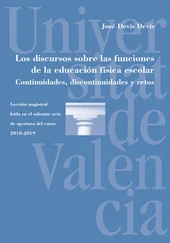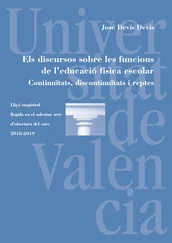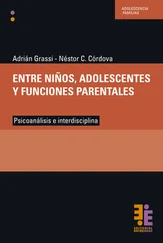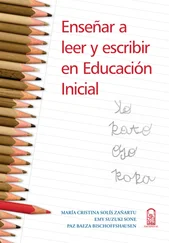En definitiva, el desarrollo apropiado de las FE permitiría no solo a un estudiante ser un mejor aprendiz y, como consecuencia, un alumno con un alto rendimiento académico en las distintas disciplinas, sino también un mejor pensador y, al mismo tiempo, una persona que controla mejor sus emociones y su conducta, sin olvidar que su estimulación temprana, independientemente del contexto donde nació la persona, permitiría abrir puertas a la tan anhelada igualdad de condiciones iniciales.
ALGUNOS EJEMPLOS DE ACTIVIDADES DONDE SE ESTIMULAN LAS FE EN UN CONTEXTO EDUCATIVO
1) Preparando el día (FE involucradas: atención, memoria de trabajo, planificación)
Consiste en escribir o dibujar al principio de la jornada escolar las distintas cosas que los estudiantes necesitarán o las acciones que deberán realizar según la meta del día. En un principio se puede hacer sin orden secuencial y más adelante se trabaja la secuencia. La idea es hacer esta actividad todos los días. De manera progresiva se puede promover realizarla el día anterior y de forma autónoma. También es importante que el estudiante pueda evaluar, durante y al finalizar la jornada, si la utilizó o no. Esta actividad también se puede hacer al final de la jornada, planificando lo que los alumnos necesitarán para el día siguiente.
2) Trabajando la atención (FE involucradas: atención, memoria de trabajo, control inhibitorio)
La idea es hacer consciente la importancia de la atención para el logro de metas. Para ello se elige una hora o momento del día (se repite toda la semana) en que se preguntan detalles de actividad o se les hace dibujar aspectos vistos en un video, o si están poniendo atención y en qué (esto lo debe hacer inicialmente el profesor, pero luego el estudiante). La idea es practicar la atención y monitorearla. Se puede tener un dibujo o lista de verificación como apoyo y compartir los resultados.
3) Controlando las emociones (FE involucradas: control inhibitorio y flexibilidad cognitiva)
Esta actividad radica en construir junto al estudiante una tabla en la que se expresen las cosas o situaciones que le molestan o irritan (por ejemplo, que le digan “gordo”), lo que no debería hacer cuando suceden (por ejemplo, pegarle al compañero) y lo que sí debería hacer cuando ocurren (por ejemplo, conversar con el compañero). En un comienzo se deben plantear situaciones imaginarias, para luego llegar a situaciones reales. Cada cierto tiempo se puede evaluar su efectividad.
Para ver más ejemplos, revisar:
1. Dawson, P. & Guare, R. (2010). Executive skills in children and adolescents. A practical guide to assessment and intervention . New York: The Guilford Press.
2. Gathercole, S. E. & Alloway, T. P. (2011). Working memory & learning . London: SAGE.
3. Goldstein, S. & Naglieri, J. A. (Eds.) (2014). Handbook of executive functioning. New York: Springer.
4. Meltzer, L. (2010). Promoting executive function in the classroom . New York: The Guilford Press.
5. Moraine, P. (2012). Helping students take control of everyday executive functions . London: Jessica Kingsley Publishers.
BIBLIOGRAFÍA
Alexander, K. L., Entwisle, D. R. & Dauber, S. L. (1993). First grade classroom behavior: its short- and long-term consequences for school performance. Child Development, 64, 801-14.
Alloway, T. P., Bibile, V. & Lau, G. (2013). Computerized working memory training: can it lead to gains in cognitive skills in students? Computer in Human Behavior, 29 , 632-638. doi:10.1016/j.chb.2012.10.023
Anderson, P. (2002). Assessment and development of executive function (EF) during childhood. Child Neuropsychology, 8 , 71-82.
Anderson, V., Northam, E., Hendy, J. & Wrenall, J. (2001). Developmental neuropsychology: a clinical approach . New York: Psychology Press.
Anderson, V. (2001). Assessing executive functions in children: biological, psychological and developmental considerations. Pediatric Rehabilitation, 4 , 119-136.
Arán-Filippetti, V. & Richaud de Minzi, M. C. (2011). Efectos de un programa de intervención para aumentar la reflexividad y la planificación en un ámbito escolar de alto riesgo por pobreza. Universitas Psychologica, 10 (2), 341-354.
Archibald, L. M. D. & Gathercole, S. E. (2006). Visuospatial Immediate Memory in Specific Language Impairment. Journal of Speech, Language and Hearing Research, 49 , 265-277.
Baddeley, A. D. (1986). Working Memory . Oxford: Oxford University Press.
Baddeley, A. D. (1990). Human memory: theory and practice. Hove, UK: Psychology Press.
Baddeley, A. D. (2000). The episodic buffer: a new component of working memory? Trends in Cognitive Sciences, 4 , 417-423.
Baddeley, A. D. & Hitch, G. J. (1974). Working memory. In G. Bower (Ed.), The Psychology of Learning and Motivation (pp. 47-89). New York: Academic Press.
Barkley, R. A. (1997). Behavioral inhibition, sustained attention and executive functions: Constructing a unifying theory of ADHD. Psychological Bulletin, 121 (1), 65-94.
Barnett, W. S. (2005). Long-term effects of early childhood programs on cognitive and school outcomes. The Future of Children, 5 (3), 25-50.
Barnett, W. S. (2008). Preschool education and its lasting effects: research and policy implications (EPRU Policy Brief). Boulder and Tempe: Education and the Public Interest Center & Education and Policy Research Unit.
Barrouillet, P., Gavens, N., Vergauwe, E., Gaillard, V. & Camos, V. (2009). Working memory span development: a time-based resource-sharing model account. Development Psychology, 45 (2), 477-490.
Barrouillet, P. & Lecas, J. F. (1999). Mental models in conditional reasoning and working memory. Thinking and Reasoning, 5 , 289-302.
Beck, S. J., Hanson, C. A., Puffenberger, S. S., Benninger, K. L. & Benninger, W. B. (2010). A controlled trial of working memory training for children and adolescents with ADHD. Journal of Clinical Child & Adolescent Psychology, 39 , 825-836.
Benson, J. B. (1997). The development of planning: It’s about time. In S. L. Friedman & E. K. Scholnick (Eds.), The developmental psychology of planning: hy, how, and when do we plan? (pp. 43-76). Mahwah, NJ: Erlbaum.
Blair, C. (2002). School readiness: integrating cognition and emotion in a neurobiological conceptualization of children’s functioning at school entry. American Psychologist, 57 , 111-127.
Bruning, R. H., Schraw, G. J., Norby, M. M. & Ronning, R. R. (2004). Cognitive psychology and instruction (4 thed). Upper Saddle River, New Jersey: Pearson Prentice Hall.
Bull, R., Espy, K. A. & Wiebe, S. A. (2008). Short-term memory, working memory, and executive functioning in preschoolers: longitudinal predictors of mathematical achievement at age 7 years. Developmental Neuropsychology, 33 (3), 205-228. doi: 10.1080/87565640801982312
Bull, R. & Scerif, G. (2001). Executive functioning as a predictor of children’s mathematics ability: inhibition, switching and working memory. Developmental Neuropsychology, 19 (3), 273-293.
Burger K. (2010). How does early childhood care and education affect cognitive development? An international review of the effects of early interventions for children from different social backgrounds. Early Childhood Research Quarterly, 25 (2), 140-165.
Cherry, K., Elliot, E. & Reese, C. M. (2007). Age and individual differences in orking memory: the size judgment span task. The Journal of General Psychology, 134 (1), 43-65.
Cinan, S. (2006). Age-related changes in concept formation, rule switching and perseverative behaviors: a study using WCST with 12 unidimensional target cards. Cognitive Development, 21 , 377-382.
Читать дальше












